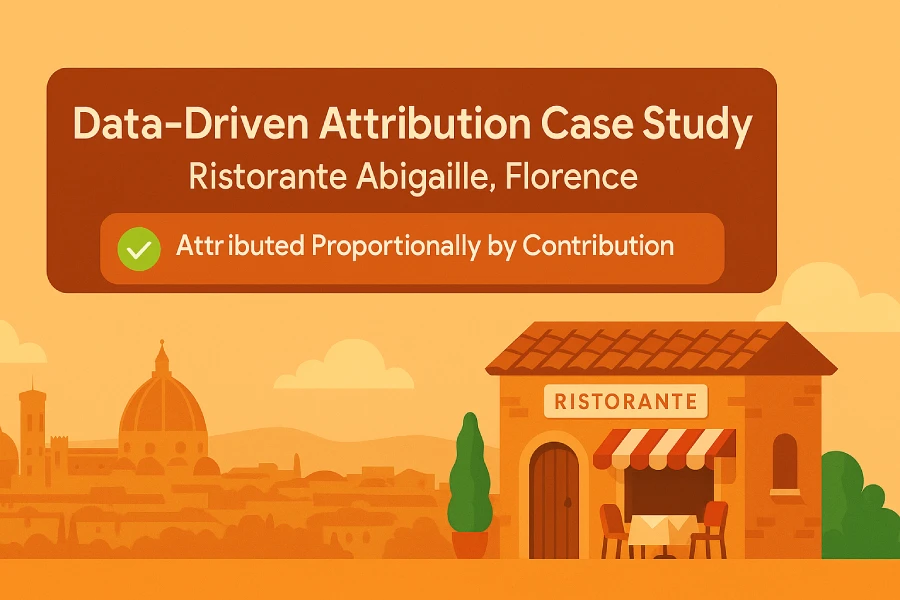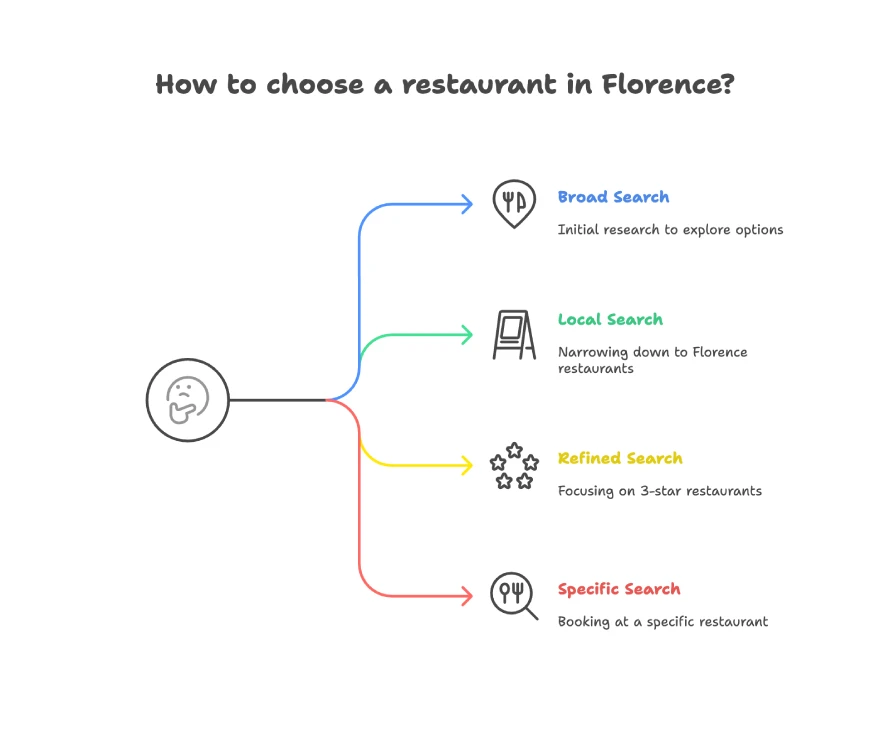The correct answer is “The conversion would be attributed to each keyword proportionally, therefore each keyword would receive credit for how much it contributed to the conversion.” Why is that right, and why are the other choices not right?
In our Miteart blog, I will give you a clear guide on how to choose the right answer easily. So, no delay—let’s start.

Table of Contents
Question
You own a restaurant called Ristorante Abigaille in Florence, Italy. A customer finds your site by clicking on your ads after performing each of these searches: “restaurant tuscany,” “restaurant florence,” “3 star restaurant florence,” and “3 star restaurant abigaille florence.” The customer makes a reservation after clicking on your ad that appeared with “3 star restaurant abigaille florence.” Using the data-driven attribution model, what keyword would receive credit for the conversion?
- The conversion would be attributed to each keyword equally, therefore each keyword would share equal credit (i.e., 25% each) for the conversion.
- The first keyword would be attributed with the conversion, therefore the first keyword would receive 100% of the credit for the conversion.
- The last keyword would be attributed with the conversion, therefore the last keyword would receive 100% of the credit for the conversion.
- The conversion would be attributed to each keyword proportionally, therefore each keyword would receive credit for how much it contributed to the conversion.
The correct answer
✅ The conversion would be attributed to each keyword proportionally, therefore each keyword would receive credit for how much it contributed to the conversion.
Details in voice:
Why the correct answer is right
Data driven attribution looks at many journeys in your account. It compares paths that ended in a booking with paths that did not. Then it learns which steps pushed people forward.
In this journey, the last search “3 star restaurant abigaille florence” shows strong intent. But the earlier searches built awareness and trust. The model gives more credit to the steps that had more impact and some credit to the steps that helped along the way.
A simple example split to show the idea
- “restaurant tuscany” might get 10 percent
- “restaurant florence” might get 20 percent
- “3 star restaurant florence” might get 30 percent
- “3 star restaurant abigaille florence” might get 40 percent
Your actual split will be learned from your data. The key idea is shared credit based on contribution.
Why the other options are wrong
- Equal credit for every keyword
That’s the linear model. It gives the same share to every step, even if a step did little to help. Data-driven methods don’t force equal shares. - First keyword gets all credit
This is the first-click model. It gives all credit to the first touch and ignores later interactions. It doesn’t match how data-driven attribution works. - Last keyword gets all credit
That is the last-click model. It gives all credit to the final search and ignores earlier work. Data-driven models spread credit across the path.
Real life example

A traveler arrives in Florence for a birthday dinner. On day one they search “restaurant Tuscany” for ideas. Later they search “restaurant Florence” to narrow choices. They refine by searching “3-star restaurant Florence.” Finally, they search “3-star restaurant Abigaille Florence” and book a table. Data-driven attribution assigns credit. The final branded query gets the largest share, while earlier generic and local searches still get some credit because they helped move the traveler from broad research to a firm choice.
Comparison table
| Attribution model | How it assigns credit | What it would do in this path |
|---|---|---|
| Data driven | Shares credit by contribution learned from your data | Largest share to the last query, smaller shares to earlier queries |
| Linear | Equal credit to each step | 25 percent to each of the four queries |
| First click | All credit to the first step | 100 percent to “restaurant tuscany” |
| Last click | All credit to the final step | 100 percent to “3 star restaurant abigaille florence” |
Practical tips
- Use the Model comparison report to see how numbers change when you switch from last-click to data-driven attribution.
- Keep funding both discovery and decision terms so the top of the funnel isn’t starved.
- Pair data-driven attribution with Smart Bidding so bids use better signals from the whole journey.
Relevant resource links
- Google Ads Help – About attribution models
- Google Ads Help – Data-driven attribution explained
- Think with Google – Why data-driven attribution matters
- Google Ads Help – Compare attribution models in reports
Conclusion
Data-driven attribution gives credit based on each step’s contribution. Here, the final branded query likely gets the largest share, but earlier searches still get some credit. This helps you invest in both the searches that start interest and those that close the booking.
FAQs
Does data driven attribution always favor the last step?
No. It gives more credit to steps that have real impact, whether early or late in the process.
Can the shares change over time?
Yes. As your data changes, the learned shares can change too.
Do I need lots of data?
More data helps the model learn better. Google has made data-driven tools widely available, so most accounts can use them.
Will this help my bidding?
Yes. With Smart Bidding, the model gives stronger signals so bids find higher-value moments throughout the journey.
